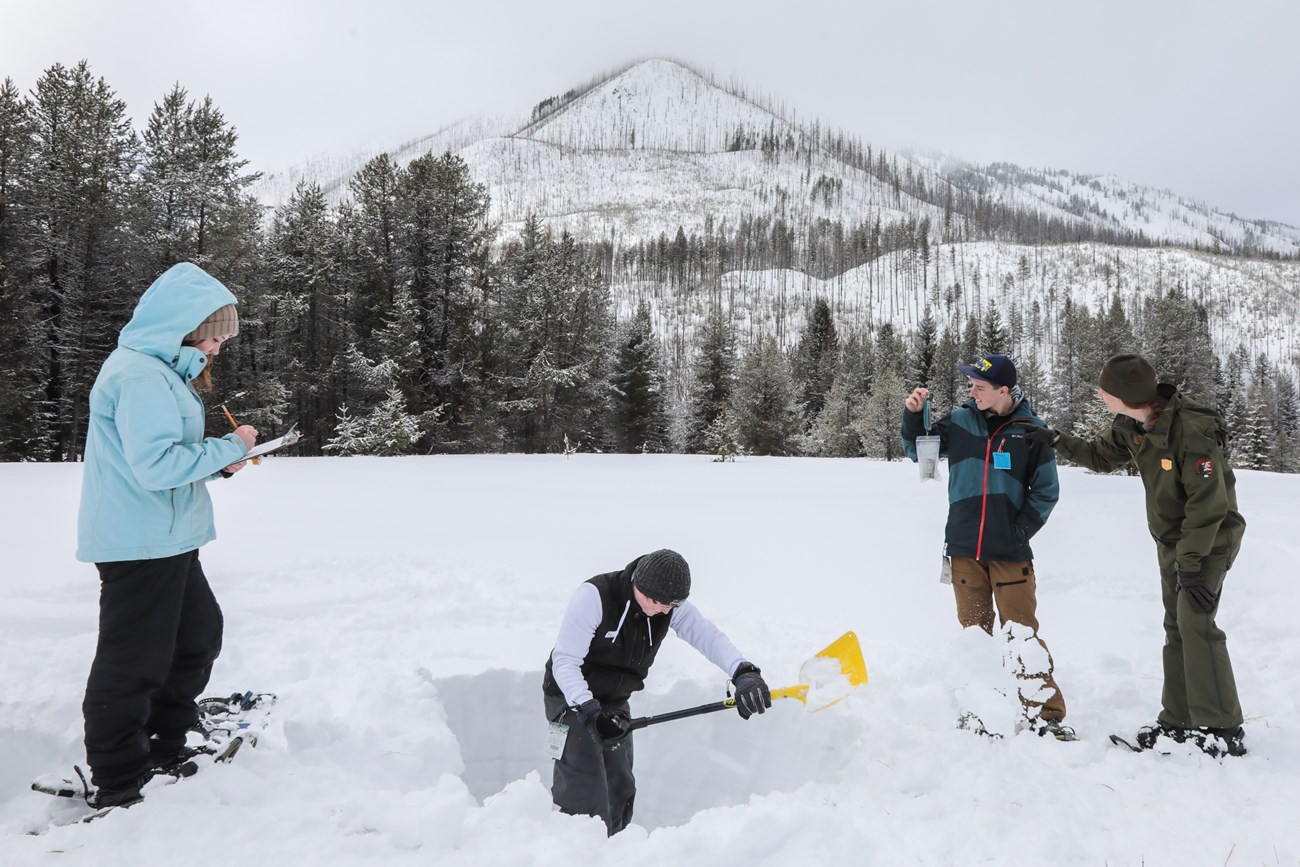
NPS/Shepherd Waldenberger Students will snowshoe the Beaver Pond Trail in St. Mary or an extended off-trail route from the Oxbow Trail. Throughout the day, they will use a worksheet to collect and record data for wildlife/insect signs, snow density and snow crystal shapes, and record weather observation readings. Winter ecology programs on both west and east sides of the park include snowshoe hikes. The park provides all the snowshoes for students and chaperones free of charge. Grade: 6-12
Objectives(Depending on grade level and weather conditions)
Field Trip LogisticsTeachers wishing to have their students participate in the winter ecology field trip should plan to arrive in the park between 9:30 - 11 am and stay until 1:30 or 2 pm. Everyone in the group must be prepared to be outside the entire time and ready to snowshoe for a distance of about 2 miles on gently rolling terrain. Reserve Your TripVisit the Scheduling & Guidelines page to find the reservation form as well as tips for a successful day in the park. If you have questions, email or call the Education Specialist at 406-888-5837. Preparing for Your TripStudents that spend time preparing for their visit get more out of a field trip to the park. Activities post-visit also help to reinforce information learned during the trip. Once registered, we will email you a teacher packet with everything you need to know, including pre- and post-visit lesson plans. Suggested activities and supplementary materials:
|
Last updated: April 9, 2024
